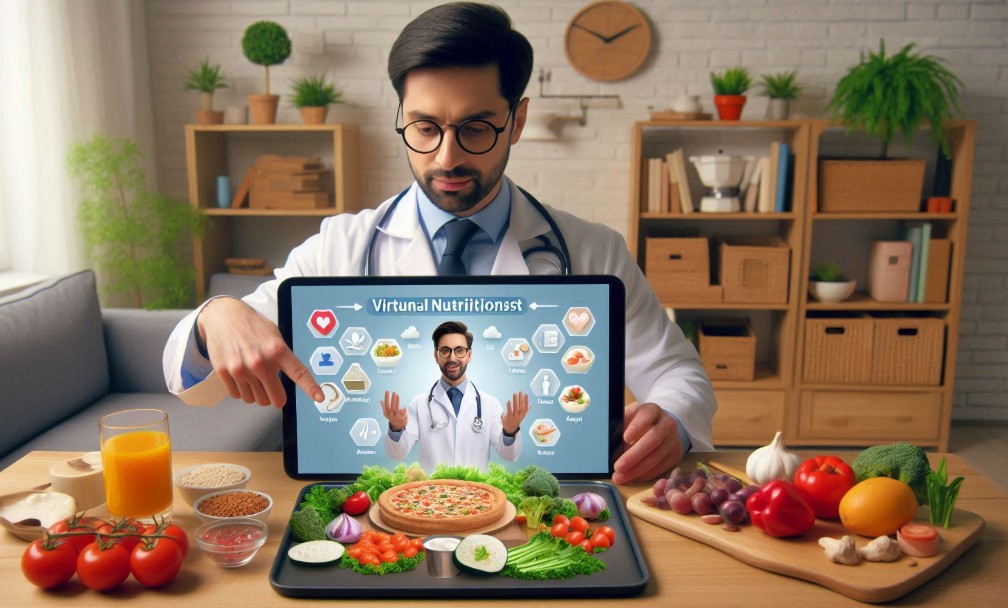In recent years, there has been a significant advancement in the field of Artificial Intelligence (AI) and Augmented Reality (AR). These technologies have become increasingly popular and have the potential to enhance virtual experiences in various fields such as gaming, education, healthcare, and...
Virtual Nutritionist Designs Allergy Friendly Menus

With the increasing number of individuals facing dietary limitations due to health conditions, the need for personalized eating plans has never been more crucial. Traditional meal planning often falls short in addressing the specific needs of those who must avoid certain ingredients. In response to this growing demand, new solutions have emerged to help tailor diets that meet individual needs while maintaining both nutrition and taste.
Technology now offers advanced tools to help those with special dietary requirements enjoy diverse, well-balanced meals. Through smart systems, individuals can receive guidance on food choices that align with their unique health conditions, ensuring both safety and satisfaction at every meal.
These advanced systems not only take the guesswork out of shopping and cooking but also offer a level of convenience that was once unimaginable. Whether managing food sensitivities or other medical concerns, the latest innovations provide a streamlined approach to eating well without compromise.
How Virtual Nutritionists Personalize Meal Plans
Customized eating plans are becoming a cornerstone for people with unique dietary needs. Modern tools use advanced algorithms and data analysis to design tailored solutions, ensuring that each person receives meals that support their health goals. These systems account for a variety of factors, such as individual health conditions, taste preferences, and nutritional requirements, offering a more personal approach to diet management.
Key Factors in Tailoring Diets
To craft an ideal meal plan, several important elements are considered:
- Health Conditions: Specific illnesses, such as diabetes or heart disease, require careful consideration of the foods included in the daily intake. These systems adjust the plan to help manage symptoms and improve overall well-being.
- Ingredient Sensitivities: The tools identify and exclude foods that could trigger negative reactions, ensuring that every meal is safe and supportive of the individual's health.
- Nutritional Balance: Personal preferences and dietary goals guide the selection of ingredients that offer the right balance of proteins, fats, and carbohydrates to meet specific needs.
- Meal Preferences: Each individual has different tastes and eating habits. The system takes preferences into account, recommending meals that the user is likely to enjoy while still meeting health objectives.
Technology Behind the Process
These personalized plans are generated using sophisticated algorithms that analyze large amounts of data, such as dietary preferences, health goals, and restrictions. Over time, the system learns from feedback and adapts the recommendations, further refining the meal suggestions to better suit the individual’s evolving needs.
- AI and Machine Learning: These technologies continually improve meal recommendations by analyzing data patterns and user responses, allowing for greater customization over time.
- Real-Time Adjustments: As individuals track their progress and provide feedback, the system can make instant changes to future meal suggestions, creating a dynamic and responsive plan.

Benefits of Allergy-Safe Diets for Health
Following a diet specifically designed to avoid certain ingredients offers numerous advantages for individuals with sensitivities or intolerances. By eliminating foods that could trigger adverse reactions, people can significantly improve their overall well-being. A tailored approach to eating not only prevents discomfort but also promotes long-term health by supporting essential bodily functions and reducing the risk of chronic conditions.
When meals are carefully selected to avoid problematic substances, individuals experience fewer flare-ups and health issues, allowing them to lead a more active and enjoyable lifestyle. A safe eating plan also ensures that the body gets the necessary nutrients without the risk of exposure to harmful triggers.
Additionally, focusing on foods that nourish and support the body’s natural processes can have a positive impact on energy levels, immune function, and even mental clarity. By providing the right balance of vitamins, minerals, and proteins, individuals with specific dietary restrictions can maintain optimal health without feeling deprived or restricted in their food choices.
Technology’s Role in Allergy Management
Advancements in technology have revolutionized the way we approach managing food sensitivities and intolerances. With the rise of smart solutions, individuals can now receive real-time guidance on the foods they consume, ensuring that every meal is both safe and nutritious. These innovations have made it easier to monitor dietary habits and eliminate harmful ingredients, reducing the risks associated with adverse reactions.
Personalized Solutions for Safer Eating
By leveraging sophisticated algorithms and data analysis, technology provides highly personalized recommendations for individuals with specific dietary restrictions. Through the use of apps, wearable devices, and online platforms, users can access customized meal plans that align with their health needs and avoid potentially harmful foods.
- Automated Meal Planning: Smart systems generate meal ideas and grocery lists based on individual preferences, making it easier to avoid ingredients that could trigger negative reactions.
- Ingredient Tracking: Apps and tools can scan product labels or menus in real time to check for problematic substances, helping users make informed choices while shopping or dining out.
Improved Monitoring and Feedback
Real-time monitoring is another key advantage offered by modern technology. Users can track their progress, receive instant feedback, and make adjustments to their diet as needed. This level of ongoing support ensures that individuals remain on track with their health goals while minimizing the risk of unintended exposure to harmful ingredients.
- Health Data Integration: Technology integrates with health tracking devices, allowing users to monitor how their bodies respond to different foods and adjust their eating habits accordingly.
- Instant Alerts: Mobile apps and wearable technology can send alerts when an ingredient or food item is detected, allowing individuals to react quickly and prevent any potential discomfort.



